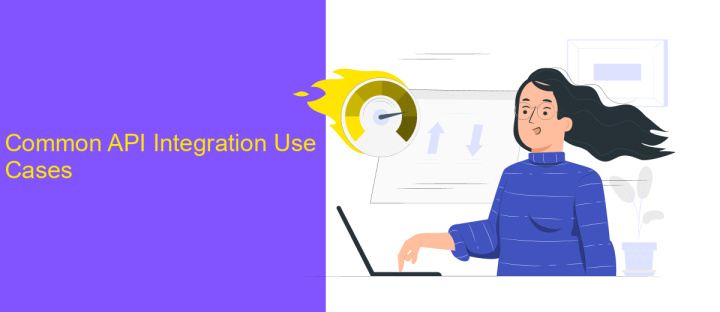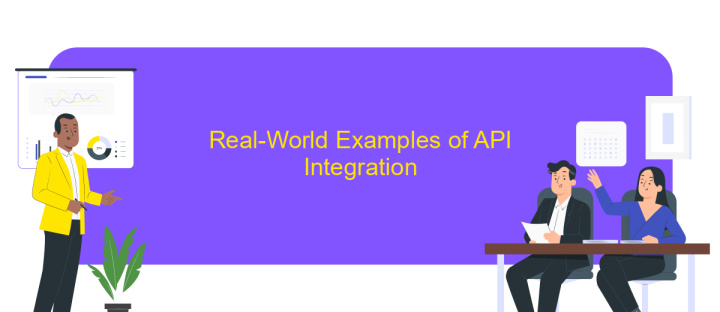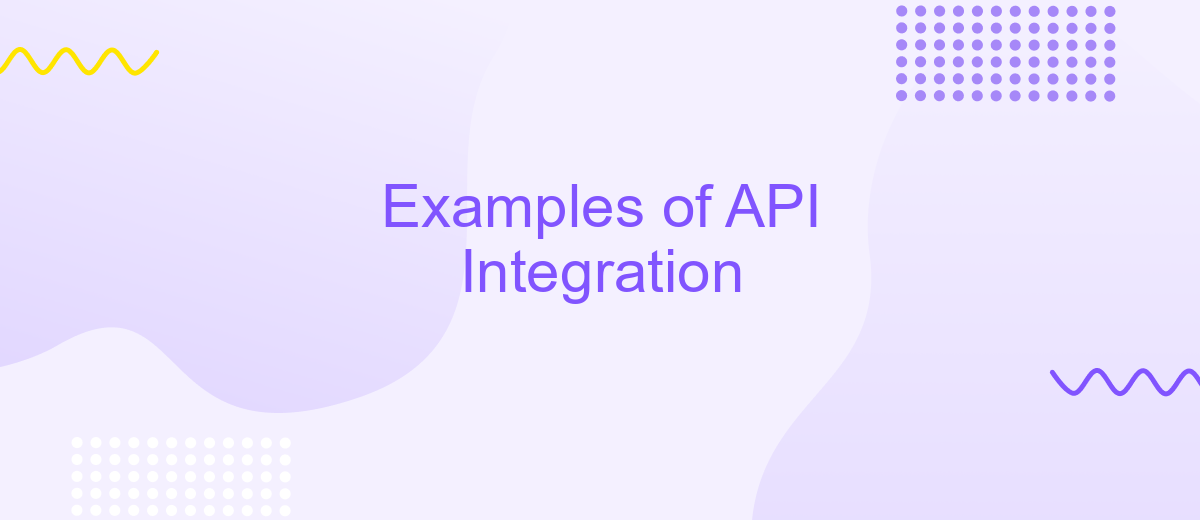Examples of API Integration
API integration has become a cornerstone of modern software development, enabling seamless communication between diverse systems and applications. By allowing different platforms to exchange data and functionalities, APIs unlock a world of possibilities for businesses and developers. This article explores various examples of API integration, showcasing how they enhance efficiency, drive innovation, and facilitate the creation of more dynamic and interconnected digital ecosystems.
Introduction to API Integration
API integration is a crucial component in modern software development, enabling different applications to communicate and share data seamlessly. By connecting disparate systems, APIs facilitate the automation of processes, enhance functionality, and improve user experiences. The integration process involves using an API to allow applications to access data and interact with external software components, operating systems, or microservices. This connectivity is essential for businesses aiming to streamline operations and innovate rapidly.
- Improved data synchronization across platforms
- Enhanced functionality and features
- Increased efficiency through automation
- Better user experience and engagement
- Scalability and flexibility in system architecture
As organizations continue to adopt digital transformation strategies, the demand for effective API integration grows. Developers must understand how to leverage APIs to build robust, scalable applications that meet evolving business needs. This requires not only technical expertise but also a strategic approach to selecting and implementing the right APIs. By mastering API integration, companies can unlock new opportunities for innovation and maintain a competitive edge in the digital landscape.
Common API Integration Use Cases

API integration plays a crucial role in modern digital ecosystems, enabling seamless data exchange and automation across various platforms. One common use case is e-commerce, where businesses integrate APIs to connect their online stores with payment gateways, inventory management systems, and shipping providers. This integration ensures real-time updates and a smooth shopping experience for customers. Another prevalent use case is in social media management, where APIs allow marketers to schedule posts, track engagement, and analyze performance across multiple channels from a single dashboard.
In the realm of customer relationship management (CRM), APIs facilitate the synchronization of customer data between different platforms, enhancing the ability to provide personalized services. Tools like ApiX-Drive simplify these integrations by offering a user-friendly interface to connect disparate systems without extensive coding knowledge. This service is particularly beneficial for businesses looking to automate workflows and improve operational efficiency. Overall, API integrations are vital for streamlining processes, reducing manual tasks, and fostering innovation in various industries.
Real-World Examples of API Integration

API integration is a crucial component in modern software development, enabling seamless communication between different systems. One notable example is the integration of payment gateways like Stripe or PayPal, which allows e-commerce platforms to securely process transactions without exposing sensitive financial information. This integration enhances user experience by providing a smooth checkout process.
- Social Media Integration: Platforms like Facebook and Twitter offer APIs that enable businesses to integrate social sharing features, allowing users to share content directly from their websites.
- Weather Data Integration: Applications like travel or event planning apps use weather APIs to provide users with real-time weather updates, enhancing the relevance and functionality of their services.
- Mapping Services: Companies like Uber and Lyft integrate Google Maps API to offer real-time navigation and location tracking, improving the efficiency and accuracy of their ride-hailing services.
These examples illustrate the transformative power of API integration across various industries. By leveraging APIs, businesses can enhance their offerings, streamline operations, and provide users with more personalized and efficient experiences. As technology evolves, the potential for innovative API integrations continues to expand, opening new avenues for growth and development.
Benefits and Challenges of API Integration

API integration offers numerous benefits that can significantly enhance business operations. By enabling seamless communication between different software applications, it allows for improved efficiency and automation of processes. This integration can lead to cost savings, as it reduces the need for manual data entry and minimizes human error. Additionally, APIs facilitate better data sharing and access, enabling businesses to make more informed decisions based on real-time information.
However, API integration also comes with its set of challenges. Implementing APIs can be complex and time-consuming, requiring technical expertise and careful planning. Security is another critical concern, as APIs can be vulnerable to breaches if not properly secured. Moreover, maintaining and updating APIs to ensure compatibility with evolving systems can be resource-intensive.
- Improved operational efficiency
- Cost savings through automation
- Enhanced data sharing and access
- Complex implementation process
- Security vulnerabilities
- Ongoing maintenance requirements
In conclusion, while API integration can drive significant advantages for businesses, it is essential to carefully weigh these benefits against the potential challenges. Proper planning, skilled resources, and robust security measures are crucial to successfully integrating APIs and maximizing their potential. By addressing these challenges proactively, organizations can leverage APIs to foster innovation and growth.
Best Practices for Successful API Integration
When integrating APIs, it is essential to start with a clear understanding of the requirements and objectives. Thoroughly document the API's capabilities and limitations to ensure compatibility with your system. Prioritize security by implementing robust authentication and encryption methods to protect sensitive data. Testing is crucial; conduct comprehensive tests in a controlled environment before deploying the integration to production. This helps identify potential issues and ensures smooth operation.
Utilizing tools like ApiX-Drive can significantly streamline the integration process. ApiX-Drive allows you to automate data transfers between various applications without requiring extensive coding knowledge. It provides a user-friendly interface and supports numerous applications, making it easier to manage and monitor integrations. Regularly update and maintain your integrations to adapt to API changes and improve performance. Finally, ensure you have a solid support system in place, with access to documentation and technical assistance, to address any challenges that arise during the integration process.
FAQ
What is API integration?
How can API integration benefit my business?
What are some common examples of API integration?
How can I set up API integration without coding skills?
What challenges might I face during API integration?
Apix-Drive will help optimize business processes, save you from a lot of routine tasks and unnecessary costs for automation, attracting additional specialists. Try setting up a free test connection with ApiX-Drive and see for yourself. Now you have to think about where to invest the freed time and money!

